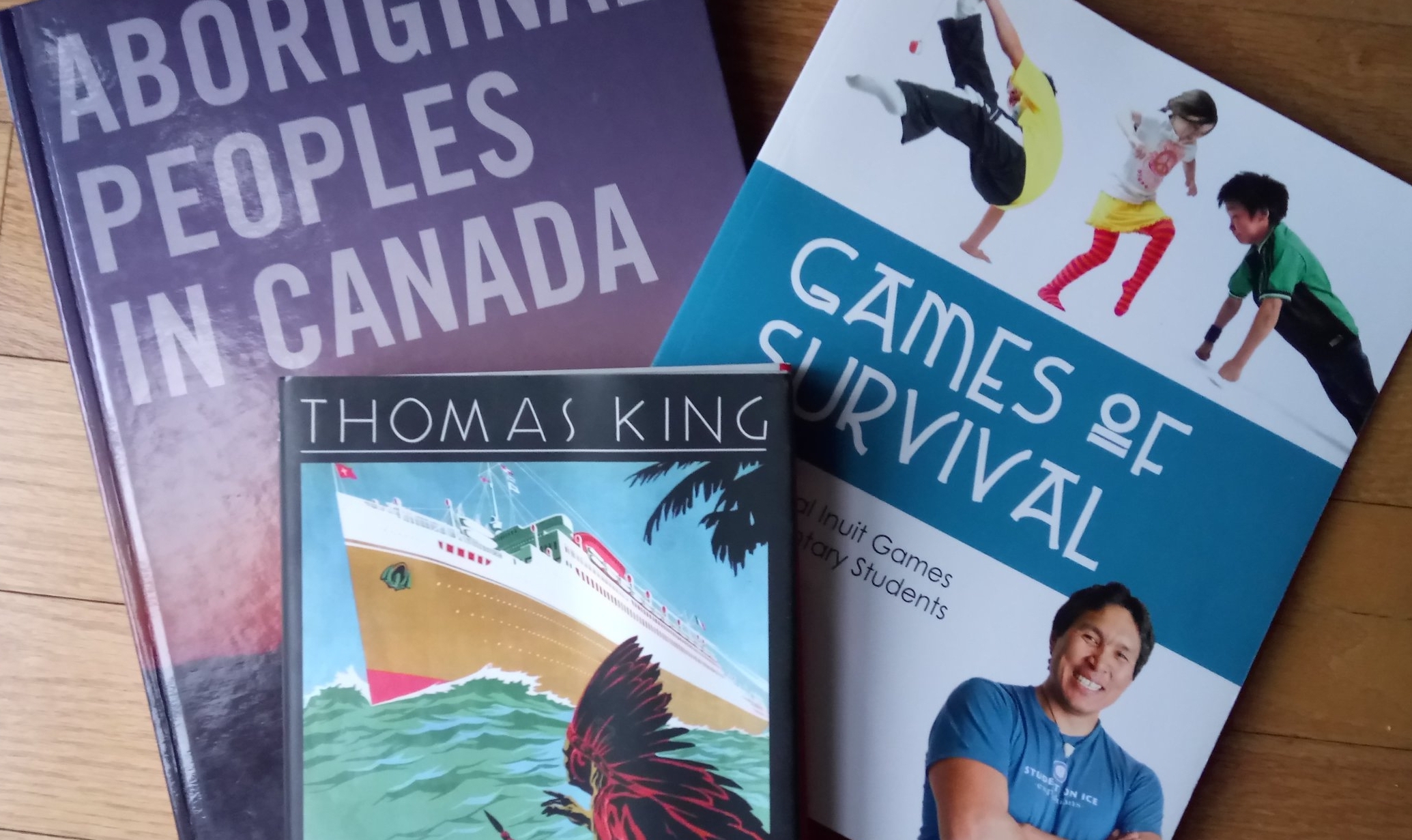This fall, Canadian Geographic released the Indigenous Peoples Atlas of Canada, four volumes of maps, articles, timelines, and images which were compiled in partnership with the Assembly of First Nations, Inuit Tapiriit Kanatami, Métis National Council, the National Centre for Truth and Reconciliation, and Indspire. I have spent the last four weeks pouring over them and I still have not read right through, a testament to the large amount of compelling and up-to-date information contained in each.
The Four Volumes
An article on Traditional Ways inside the general volume.
The Atlas is split into four volumes, one each for First Nations, Métis, and Inuit, and a slightly larger volume which contains maps and general information.
These maps of what we now call Canada cover Indigenous languages, Treaties and unsettled land claims, First Nation, Métis and Inuit communities, and Residential Schools among other markers. Seeing all this information compiled helped me to finally piece together knowledge I had gained from other sources and make connections I had missed. I forgot how much I love maps and atlases!
The volume also contains a large section about Terminology, and information about Residential Schools and Truth and Reconciliation, including well-organized timelines to keep track of important dates.
My personal favorite component is the essay “De-Indigenizing and Re-Indigenizing Our Territory by Metis scholar Adam Gaudry who writes about the political nature of mapping, how mapping has been weaponized against Indigenous peoples, and the importance of re-drawing maps to recognize Indigenous ways of knowing. I love speaking with students about the critical questions about power and how it can be communicated through things we might otherwise think are neutral like laws, place names, historic sites, and maps.
First Nations, Inuit, and Métis
The cover of the volume on the Métis
The volumes on First Nations, Inuit and Métis peoples are so full of information that I still have not read them right to the end. They each cover a wide variety of topics in articles by prominent writers, storytellers, scholars, and knowledge holders from those Nations, as well as contain timelines, terminology, and images. I think they are a perfect resource for students to turn to for accurate information - I can just imagine the variety of future inquiry and research projects which use them as a foundational text!
As an instructor, I feel particular drawn to the volumes on the Métis and Inuit peoples because I have been exposed to more resources focused on First Nations. It is amazing to have this amount of information that I trust in one place. I highly recommend that you consider purchasing a copy for your library, your classroom, or your own personal collection!


